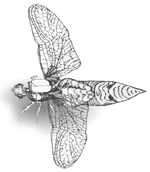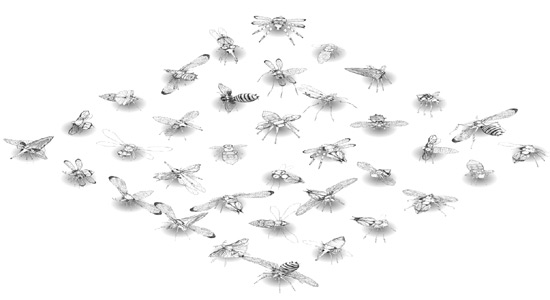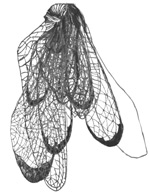
|
|||||
|
|
|||||
| These organic machines were inspired
by a commission from the Manyfold
Collective and the myriad flying, creeping, crawling, sprinting,
and biting insects of the Lone Star State. |
|||||
|
|||||
Graphic elements are divided up into categories that describe their
function and general appearance. These categories are head, thorax,
abdomen, wings, antennae, and legs. The legs are further grouped
into femur, tibia, tarsus, and claw categories. Construction of
each organism is arbitrary. The selection of individual elements
from each category is a combinatorial process that ultimately renders
tens of thousands of unique organisms. Walking attributes are randomized across a limited range of values. This includes gait, cadence, leg length, walking height, and stability. All organisms follow a 3 by 3 walking pattern, where no more than three legs are ever off the ground at the same time. True to common insect locomotion, the front pair of legs guide and pull, the back legs push, and the middle legs stabilize and support the insect. |
|||||

|
Originally installed for
the Austin Museum
of Digital Art, December 10, 2002.
|
|
|
